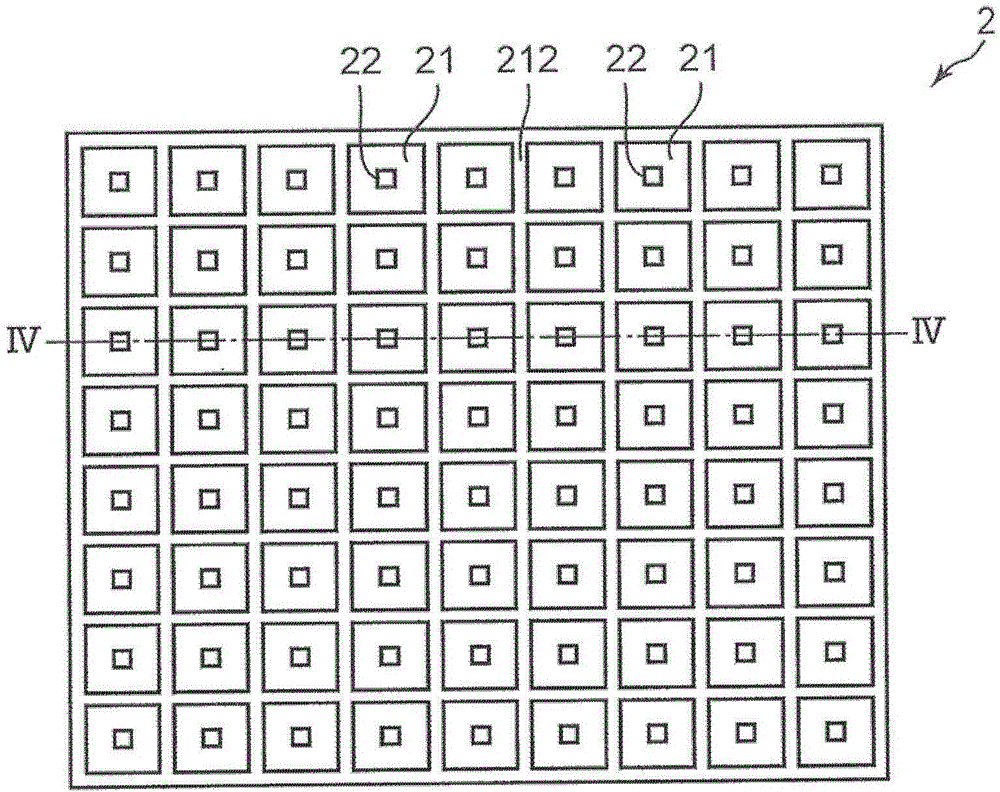Object-holding device
A technology for holding devices and objects, applied in biochemical cleaning devices, enzymology/microbiology devices, tissue cell/virus culture devices, etc., can solve the problem of complex structure of the holding device, inability to obtain the dispersion effect of cell agglutination, Cell clots get rid of other problems
- Summary
- Abstract
- Description
- Claims
- Application Information
AI Technical Summary
Problems solved by technology
Method used
Image
Examples
no. 1 approach >
[0067] Next, several embodiments of the holding device D accompanying specific examples of the dispersion mechanism 3 will be illustrated. Figure 11 It is a block diagram schematically showing an object holding device D1 according to the first embodiment. The holding device D1 uses air pressure to generate pressure in the closed area CA in the container 1 to generate a liquid flow LC in the through hole 22 . The holding device D1 includes a distribution mechanism 3A (pressure adjustment mechanism) formed of a pump 31 and its controller 32 in addition to the above-mentioned container 1 and plate 2 . A camera 5 for capturing images of the board 2 is arranged below the container 1 . The controller 3 also controls the discharge operation of the cell suspension by the dispensing tip 4 and the imaging operation of the camera 5 .
[0068] Container 1 is the same as before based on figure 1 and figure 2 The containers described are the same. Pass the operation hole 141 in advan...
no. 2 approach >
[0095] Figure 15 It is a block diagram schematically showing an object holding device D2 according to the second embodiment. The holding device D2 applies a pressure to the liquid L by using a diaphragm-type dispersing mechanism 3B to generate a liquid flow LC in the through hole 22 . The dispersion mechanism 3B includes a drive mechanism 33 including a working rod 331 and a controller 34 thereof. A part of the bottom wall 11 of the container 1 is formed of an elastically deformable diaphragm 15 (bulging member). The working rod 331 is arranged in a state of being in contact with the diaphragm 15 . In this second embodiment, the operation hole 141 is not used during dispersion, therefore, in Figure 15 Its description is omitted. Other structures are the same as those of the first embodiment.
[0096] The driving mechanism 33 only needs to be able to make the working rod 331 go in and out, for example, a hydraulic mechanism, an air pressure mechanism, a solenoid actuator...
no. 3 approach >
[0102] Figure 17 is a block diagram schematically showing an object holding device D3 according to the third embodiment, Figure 18Ais a plan view of the container used for holding device D3. The holding device D3 is a modified embodiment of the holding device D1 of the first embodiment, and is a holding device having a structure capable of locally dispersing the cell aggregates C carried on the plate 2 .
[0103] The container 1A of the holding device D3 includes a partition wall 16 that divides the closed area CA in the container 1A into four areas. The partition wall 16 is a part that two rectangular flat plates are assembled in a vertical state, and when viewed from above ( Figure 18A ) is in the shape of a cross. The height of the partition wall 16 is equal to the distance between the bottom wall 11 of the container 1A and the plate 2 . By having such a partition wall 16, the closed area CA is divided into the first area RA, the second area RB, the third area RC, an...
PUM
 Login to View More
Login to View More Abstract
Description
Claims
Application Information
 Login to View More
Login to View More - Generate Ideas
- Intellectual Property
- Life Sciences
- Materials
- Tech Scout
- Unparalleled Data Quality
- Higher Quality Content
- 60% Fewer Hallucinations
Browse by: Latest US Patents, China's latest patents, Technical Efficacy Thesaurus, Application Domain, Technology Topic, Popular Technical Reports.
© 2025 PatSnap. All rights reserved.Legal|Privacy policy|Modern Slavery Act Transparency Statement|Sitemap|About US| Contact US: help@patsnap.com



